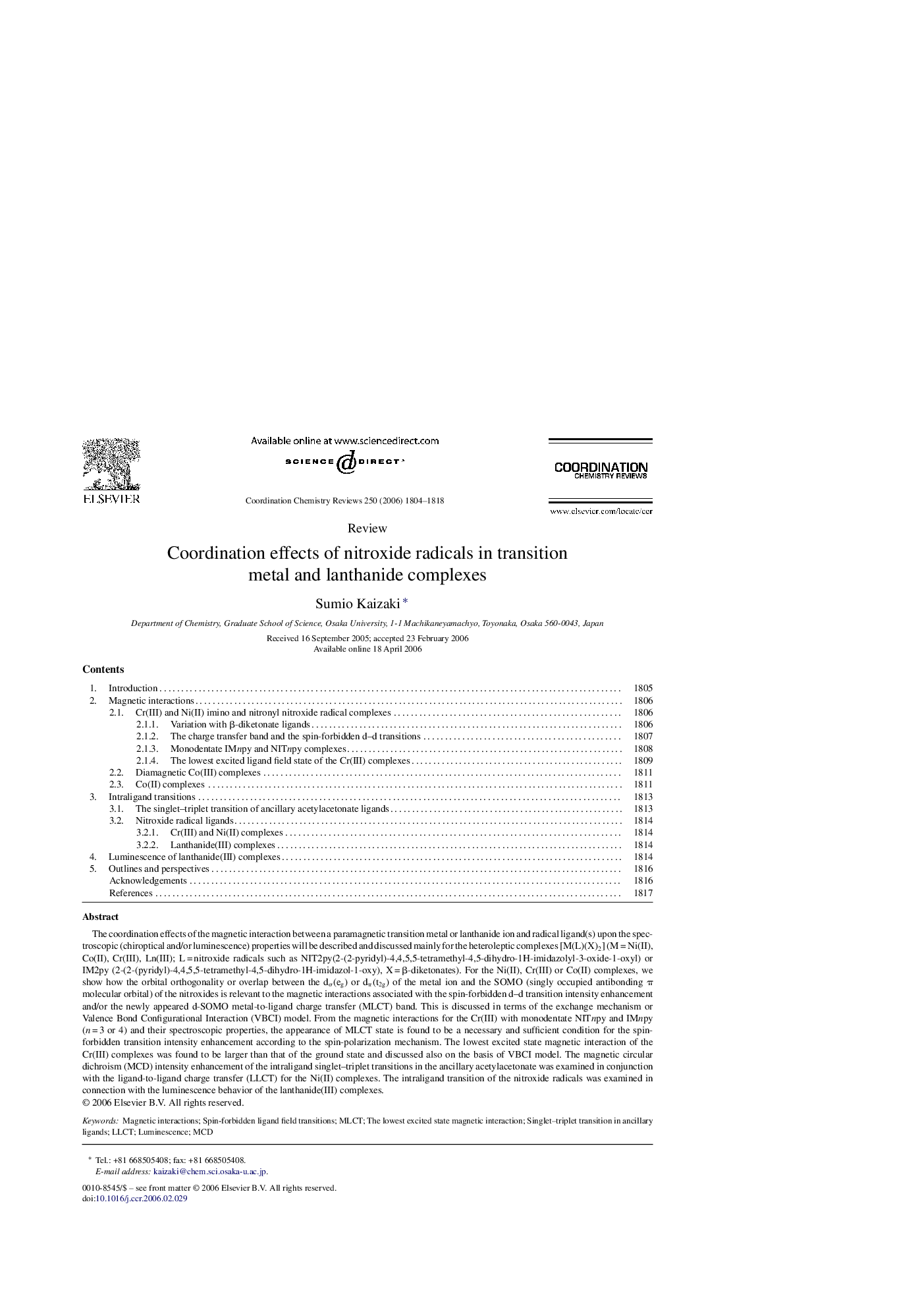| Article ID | Journal | Published Year | Pages | File Type |
|---|---|---|---|---|
| 1300732 | Coordination Chemistry Reviews | 2006 | 15 Pages |
The coordination effects of the magnetic interaction between a paramagnetic transition metal or lanthanide ion and radical ligand(s) upon the spectroscopic (chiroptical and/or luminescence) properties will be described and discussed mainly for the heteroleptic complexes [M(L)(X)2] (M = Ni(II), Co(II), Cr(III), Ln(III); L = nitroxide radicals such as NIT2py(2-(2-pyridyl)-4,4,5,5-tetramethyl-4,5-dihydro-1H-imidazolyl-3-oxide-1-oxyl) or IM2py (2-(2-(pyridyl)-4,4,5,5-tetramethyl-4,5-dihydro-1H-imidazol-1-oxy), X = β-diketonates). For the Ni(II), Cr(III) or Co(II) complexes, we show how the orbital orthogonality or overlap between the dσ(eg) or dπ(t2g) of the metal ion and the SOMO (singly occupied antibonding π molecular orbital) of the nitroxides is relevant to the magnetic interactions associated with the spin-forbidden d–d transition intensity enhancement and/or the newly appeared d-SOMO metal-to-ligand charge transfer (MLCT) band. This is discussed in terms of the exchange mechanism or Valence Bond Configurational Interaction (VBCI) model. From the magnetic interactions for the Cr(III) with monodentate NITnpy and IMnpy (n = 3 or 4) and their spectroscopic properties, the appearance of MLCT state is found to be a necessary and sufficient condition for the spin-forbidden transition intensity enhancement according to the spin-polarization mechanism. The lowest excited state magnetic interaction of the Cr(III) complexes was found to be larger than that of the ground state and discussed also on the basis of VBCI model. The magnetic circular dichroism (MCD) intensity enhancement of the intraligand singlet–triplet transitions in the ancillary acetylacetonate was examined in conjunction with the ligand-to-ligand charge transfer (LLCT) for the Ni(II) complexes. The intraligand transition of the nitroxide radicals was examined in connection with the luminescence behavior of the lanthanide(III) complexes.
